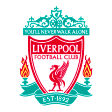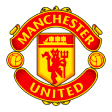Fallen Giants: Lamenting the loss of Milan as European heavyweights
There was no mistaking the look of pure joy on Fabio Cannavaro’s face when he held the World Cup aloft in 2006, but despite the unforeseen triumph of the national team, this was a worrying time for Italian football.
The match-fixing scandal known as Calciopoli had emerged just before the tournament started and threatened to tear Serie A apart.
Prosecutors called for the expulsion of Juventus, Lazio and Fiorentina from the league, while Reggina and AC Milan had also landed themselves in hot water.
In the end, the authorities decided that only Juventus should be relegated to Serie B, but their absence alone left a considerable power vacuum at the top of Serie A.
Which of the other three giants would make the step up? The clear favourites were Roberto Mancini’s Inter, but the door was also open for Roma, who had Francesco Totti at his peak, and for Carlo Ancelotti’s Milan.
With Lionel Messi and Cristiano Ronaldo yet to emerge and Zinedine Zidane hanging up his boots following his headbutt on Marco Materazzi, Milan had arguably the finest player in the world at the time in Kaka, ably supported by the leadership of Massimo Ambrosini, the silk of Andrea Pirlo, the steel of Gennaro Gattuso, and the unstoppable force of nature that was Clarence Seedorf.
Just to make it more impressive, add to that trio 2004 Ballon D’Or winner and star striker Andriy Shevchenko, 2002 World Cup winning captain Cafu, veteran defender Alessandro Nesta, and the already-legendary Paolo Maldini, who had ably proven that he could still cut it even at age 38.
With such an embarrassment of riches in their squad, it’s easy to see why Milan had reached two of the previous four Champions League finals, beating Juventus on penalties to win in 2003 before losing to Liverpool in 2005. They had exited the 2006 edition at the semi-final stage, losing 1-0 over two legs at the hands of eventual victors Barcelona.
Yet despite escaping the worst of the punishments in the fallout from Calciopoli, Milan have suffered a great fall from grace. How did this happen to one of European football’s greatest clubs?
The beginning of the end
Milan’s transfer activity in the summer of 2006 tells the first part of the story and helps to explain why it was Inter, not Milan, who would make Lombardy the centre of power in the early years of Italian football’s 21st century renaissance war.
History would justify Milan’s decision to sell the hugely-popular Shevchenko to Chelsea for £37million – the last six years of his career after moving to Stamford Bridge yielded just 54 goals in 186 games, the same number as he had managed in just 80 games in his final two years at San Siro – but where Milan erred was in failing to replace the Ukrainian.
Their ability to bring in reinforcements was hampered by the reputational damage suffered by Serie A as a whole in the wake of Calciopoli, which saw the likes of Cannavaro, Gianluca Zambrotta and Lilian Thuram leave for Spain without significant arrivals coming back in the opposite direction.
One exception to this was Milan’s gamble on the original Ronaldo, who had been the finest striker of his generation but arrived in Milan having played just seven league games for Real Madrid the previous season.
However, their gamble failed: he played just 20 times in his two seasons for Milan before his troublesome knees gave out once more.
That left them reliant on Filippo Inzaghi and Alberto Gilardino, both of whom were clinical and capable but limited – especially Inzaghi – at a time when more rounded strikers were becoming the norm at top clubs: players like Carlos Tevez, Didier Drogba – and Zlatan Ibrahimovic.
If they had chosen to pick at Juventus’ zebra-like carcass that summer, they might well have beaten Inter to the signing of Ibrahimovic for two-thirds of the money they’d earned off Shevchenko’s sale nearly three months earlier.
But whether through a failure of scouting or, far more likely, the distraction of fighting their own scandal-related punishment, Milan missed out on Zlatan for the timebeing.
Despite those retrospective failures, Milan actually got off to a good start in the season following that tumultuous summer.
With their Champions League place restored on appeal but an eight-point deduction in force in the league, Ancelotti’s men focused their efforts on their European campaign, overcoming Celtic, Bayern Munich and Manchester United en route to a final that gave them both vengeance against Liverpool and their seventh European Cup.
But those years really belonged to Inter, who won the league title at a canter every year and, in 2010, claimed the first treble in Italian football history under the stewardship of Jose Mourinho.
Milan, meanwhile, had managed no better than third since that summer of 2006, and had not come even close to challenging for the title.
Getting Zlatan
To break their city rivals’ monopoly on trophies, they needed something special. They needed inspiration. They needed Zlatan. And this time, they got him.
After spending the 2009-10 season miserably failing to fit in at Barcelona and being forced to watch his former club claim European triumph, Ibrahimovic arrived back in Milan on loan in the summer of 2010, slotting in alongside fellow new signing Robinho to inspire the Rossoneri to their first league title in seven years.
That was Milan’s 18th Scudetto title, putting them back level with Inter and behind only Juventus in historic league title stakes.
Ibrahimovic made his deal permanent following that triumph, but despite an excellent tilt at retaining their title, they eventually finished four points behind Antonio Conte’s Invincibles, the resurgent Juventus, who became the first Italian side to go the whole season unbeaten since Milan themselves in 1992.
Regardless of their lack of silverware, things on the field over the previous two years strongly suggested Milan were back in the Italian elite. Those who were paying attention to things off the field, though, had cause for concern.
The always-excellent Swiss Ramble blog wrote of those warning signs in May 2012. The club’s financial situation was poor, without being terrible, but their playing squad contained little resale value to top up the coffers.
Losing legends
Antonio Cassano, Mathieu Flamini, and Kevin Prince-Boateng all had fitness and injury issues that continue to this day, while Nesta (36), Inzaghi (39), Seedorf (36), Gattuso (34), Zambrotta (35) and Mark van Bommel (35) were all at the end of their careers and left the club for no fee.
Their departures made clear that Milan’s loyalty to long-serving players, while admirable, had been badly mismanaged.
Instead of bringing through youngsters to succeed them and the departed Kaka, who had left for Real Madrid in 2009, they plugged gaps with loan signings like David Beckham, Alberto Aquilani, Sulley Muntari, Bojan and, later, Fernando Torres – hardly the way to build a sustainable future for the club.
Bizarrely, rather than moving the ageing Seedorf, Van Bommel or Gattuso out of the first team, they allowed the one loyal midfielder who actually had some good years left in him to leave on a free transfer.
Pirlo, the midfield maestro, had fallen out of favour with Massimiliano Allegri in their title-winning season and, frustrated, moved on to have the best five years of his career with Juventus.
Their financial situation was exacerbated by long-term benefactor Silvio Berlusconi’s gradual withdrawal of investment from the club due to both Financial Fair Play restrictions and the political pressure put on the controversial TV magnate in the build-up to the 2013 Italian elections.
Finally, Milan’s revenues have been hit not only by their abortive attempts to build a new stadium of their own and move away from their tenancy at the San Siro, but also by the diminishing appeal of Serie A football driving down the price of TV rights compared with their English, German and Spanish rivals.
To balance the books, therefore, the club had little option but to sell their two best players when newly-wealthy Paris Saint-Germain came knocking. Rock-solid centre-back Thiago Silva and Ibrahimovic, who had just recorded an incredible 28 goals in his 32 league appearances, both departed for France.
Cristian Zapata proved a decent replacement for Silva, but Mario Balotelli fell well short of Ibrahimovic’s standards.
Predictably, results suffered, and Milan failed to qualify for Europe for three seasons between 2015 and 2017. That is unprecedented other than during their period of disgrace in the early-to-mid 1980s.
On that occasion, Milan were able to build themselves back up to being world-beaters through the incredible talents of academy graduates like Maldini, Franco Baresi, Demetrio Albertini and Alessandro Costacurta.
The emergence of Mattia Di Sciglio and Gianluigi Donnarumma suggests that production line is still running, but whether they can get back to former glories any time soon remains to be seen.
More AC Milan
Remembering seven times Kaka was one of the world’s best footballers
21 of the best quotes on Paolo Maldini: ‘His soul belongs to Milan’
Seven strange football hoodoos: Harry Kane, James Milner, AC Milan & more
Milan 93-94, Juve 01-02 & the defences which defined Serie A’s golden era



























